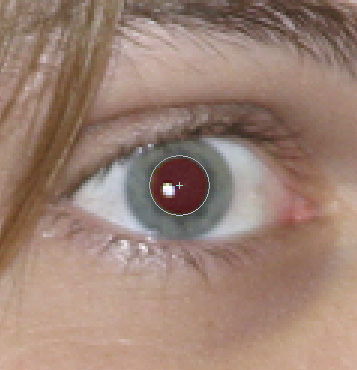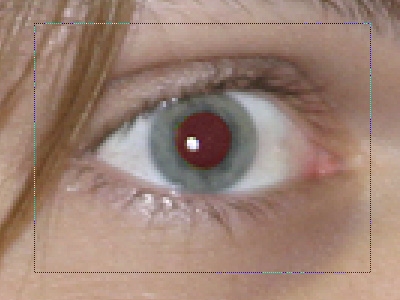AnandTech Guide to Better Photos: Post-Processing
by Stephen Caston on March 18, 2005 3:45 PM EST- Posted in
- Digital Camera
Red-eye Reduction
Given the time and patience required, everyone could remove red-eye by hand using a paint brush in Photoshop or Elements. The point of this section is to show you how to do it as quickly as possible. Since the technique is a bit different between the two programs, we'll explain the process with Photoshop and Elements separately.Here is the original image we will be working on.
Photoshop (CS)
1) Open the image with the red-eye problem and set the magnification to "Actual Pixels" so that you can get a good look at those red eyes. In our example image, the resolution of the original file is only 1 megapixel, so we are going to magnify the image by 300%. Next, hold the left mouse button down on the "Healing Brush Tool" and select the "Color Replacement Tool" from the flyout menu.
Color Replacement Tool
3) Select a brush that is about the size of the red-eye area and click once in the center.

5) As an optional final touch, we like to get the Burn tool from the tools palette to darken the pupils a bit.
Photoshop Elements 3
1) Select the Red-eye Removal Tool from the tools palette.
Red-eye Removal Tool

Drawing a box around the red-eye area
 Photoshop CS |
 Photoshop Elements 3 |
| Click images to enlarge. | |










20 Comments
View All Comments
vladik007 - Saturday, March 19, 2005 - link
if you're such a hot shot photographer , read dpreview's articles and subscribe to magazine that are FOR pros. This is a sire for hardware geeks , so this little tid bit is great and refreshing.Power to anand and his editors , great job.
vladik007 - Saturday, March 19, 2005 - link
hoppa - Saturday, March 19, 2005 - link
In Soviet Russia, layers adjust YOU.JarredWalton - Friday, March 18, 2005 - link
Great stuff, Stephen. Now all I need is a way to make the crappy, grainy images from my digital camera not look crappy and grainy. (Note to others: The Fuji S5000 shoots *only* in ISO200 or ISO400 modes. So, my options are "grainy" and "really grainy". I'm going to see if I can pick up some halogen lights tonight and maybe they'll help.)CrystalBay - Friday, March 18, 2005 - link
thanks for the toot..blackbrrd - Friday, March 18, 2005 - link
Nice article!More articles like this is good :)
(Don't go the tomshardware way.. 80% of the articles there are useless)
segagenesis - Friday, March 18, 2005 - link
#2 - Wah wah... this is a good article, would you rather have your pictures look like mud?Rocket321 - Friday, March 18, 2005 - link
I found this information very useful and hope to see more photo guides in the future. As an amature this type of infomation is invaluble.Questar - Friday, March 18, 2005 - link
Typical amatuer stuff, adding way too much contrast and color saturation to punch up images.InuYasha - Friday, March 18, 2005 - link
power of phtoshop!